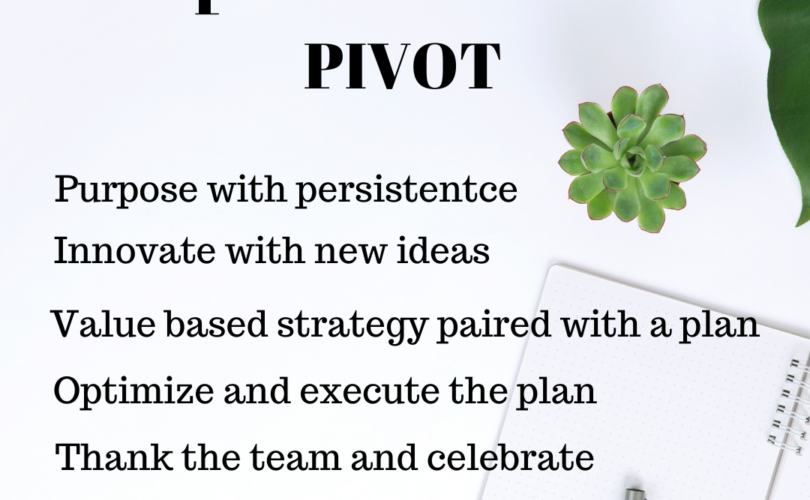Over the weekend, I ran across a Ruth Bader Ginsburg quote I had not heard before. It says, “so often in life, things that you regard as an impediment turn out to be great, good fortune.” What if we could all make a good fortune out of 2020?
Please do not misunderstand; I know this year has been devastating for many families and companies. In times of crisis, everyone must refocus on their purpose and identify the bare necessities needed to keep going personally and professionally. The extras we thought we had to have to keep ourselves running have likely been eliminated. Crisis brings you back to your core, and you must decide if this crisis will define you or inspire you.
Ginsburg encountered a crisis when she graduated first in her class at law school at Columbia, but no one would hire her because she was female. She was forced to pivot and became a professor at Columbia University. She then used that pivot to form a platform that advocated for the rights of women, immigrants, LGBTQ communities, environmental issues, and more. This paved the way for her to become a justice on the Supreme Court. She found a way even though it was not the way she had planned.
Right now, many people and companies are in a crisis. In a crisis, one of three things happens. People pretend it is not happening, people make small shifts in their strategy to stay afloat, or people take the opportunity to innovate and reinvent themselves and their organizations. It has been proven organizations that come out of a crisis most successfully are the ones who innovate and reinvent themselves. A couple of examples of this are YouTube, who actually started as a dating platform and Twitter who initially had been a website to find podcasts to subscribe to back in 2005. Every pivot needs a few key elements to be successful. I like to use an acronym with the word pivot, which describes what needs to happen to make your pivot successful.
P – Purpose with persistence. This phase is when you focus on your purpose and determine what is needed to keep the lights on. Essentially, why do you do what you do and what do you need to do to keep yourself and your business afloat? Right now is also a time to liquidate unnecessary items to create cash because cash is required to innovate.
I – Innovate with new ideas. If your current model isn’t working or solving your customers’ problem, it is time to step back and think differently about where you are going. What problem does your customer have that you are not solving? Are you targeting the right customer? Where is there a gap in the market you and your team can fill? This is the time to optimize teams and ensure the right seats on the bus are filled with the right people for the organization’s future vision and create the leadership team’s alignment.
V – Value add based strategy with a plan. Now that an idea is identified to pursue, it is time to develop a strategy and a plan. A strategy is how you will differentiate yourself to your customers and from your competition. It is the unique value proposition you are bringing to the table. Once the strategy is determined, gain alignment around it from the leaders in the organization. Next, create an execution plan tied to the strategy containing financial targets and key performance indicators. Set goals that are specific and tied to time frames. Each goal will have key performance indicators and an owner who will be accountable for their success. Quarterly goals are a great time frame to use for goals because they are short enough to keep engagement and track progress.
O – Optimize and execute the plan. Once the plan is ready, the leader will introduce the plan to everyone and communicate the organization’s path to gain alignment. Every individual will need to know their role and what they need to do to increase the plan’s success. As the plan starts implementation, it is monitored to ensure the goals, time frames, and projected financials match. The percentage of the plan complete is displayed in a common area where everyone can see the progress. This visual keeps everyone informed and engaged. If there is a discrepancy or a target is missed, the plan must be recalibrated to get it back on track. Rarely is a plan implemented without a change from beginning to end. The important thing is those discrepancies are discovered early, and there is time to adjust to meet the target.
T – Thanks. Your team is working hard to meet your goals. It is vital to thank them for their efforts. So often, everyone is stuck in the doing, and we don’t stop and celebrate the wins. Once a quarter, celebrate the progress made. Make the celebration scaleable on how much of the goal the team meets. Your people are making this happen, and you want them to stay motivated. Recognizing those involved is a great way to do it.
Ultimately, the power is in any person or company to make a pivot. I hope this information can help make your next pivot successful. If you have any questions or would like guidance on your next pivot, send me an email, and we can get you on the path to success.
